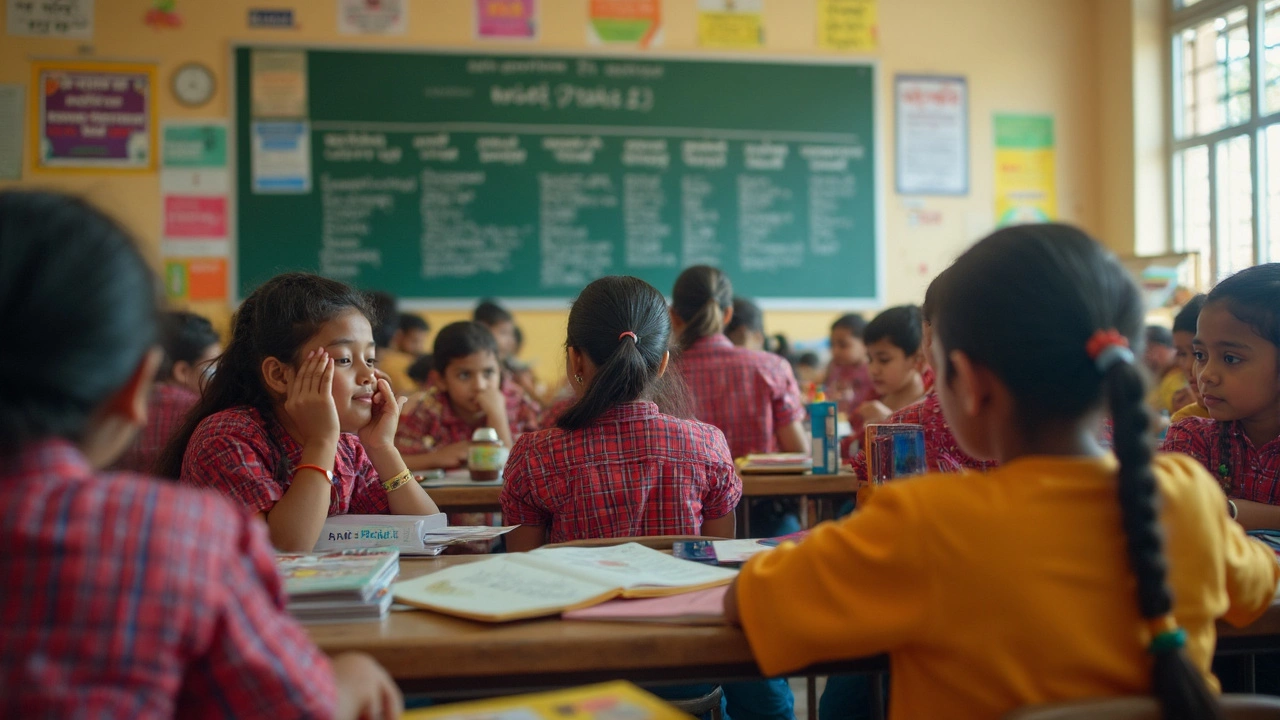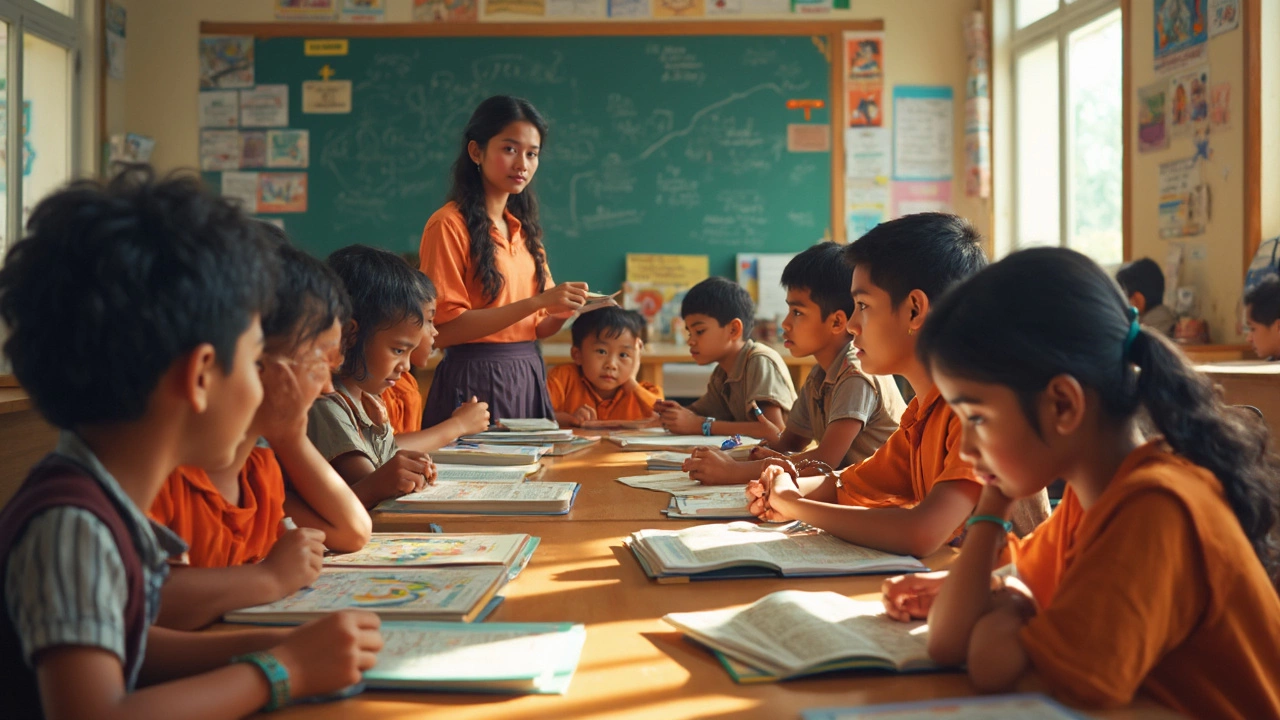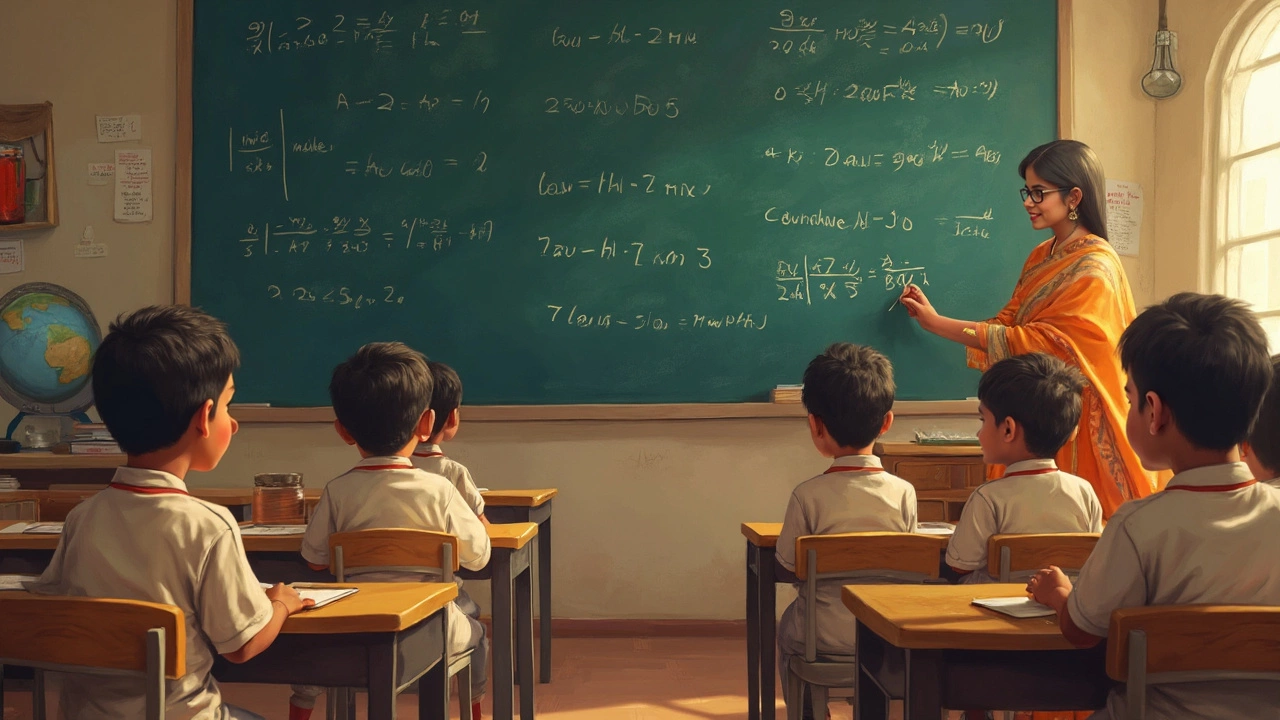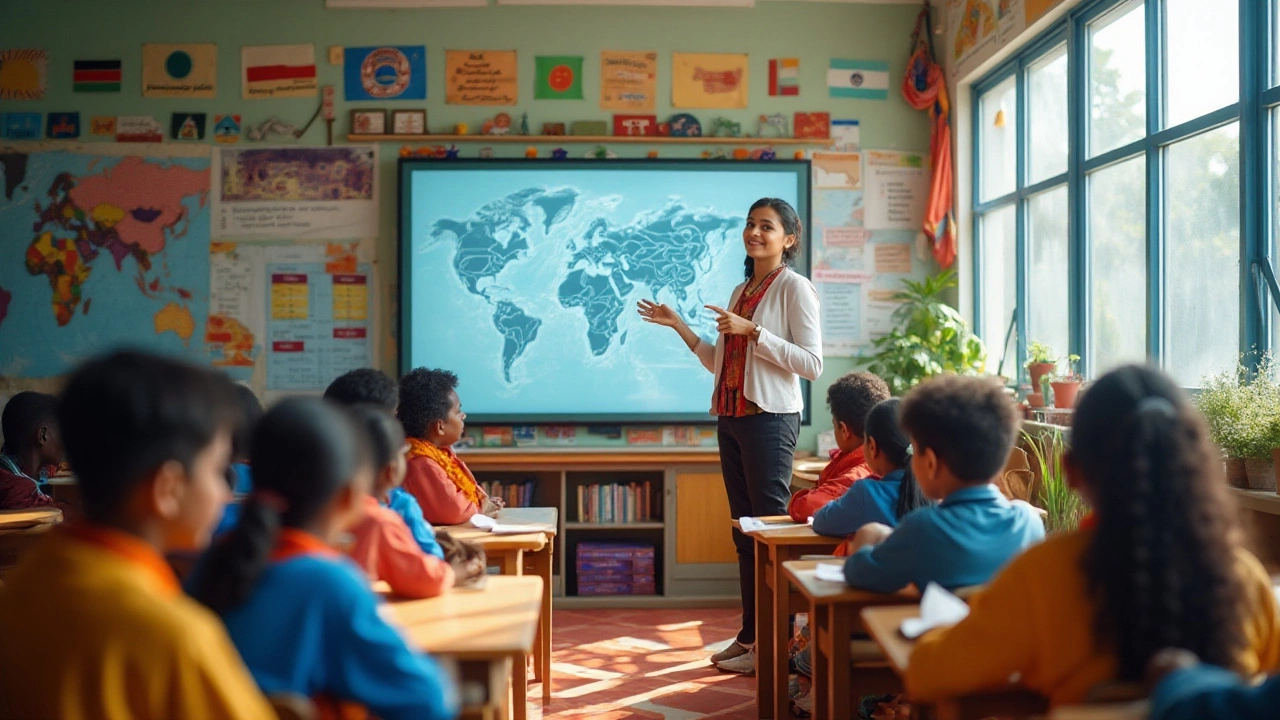If you’ve ever had to figure out school options in India, you’ve probably heard people talk about the CBSE syllabus. It’s a big deal—almost every parent has an opinion on it, and for good reason. The Central Board of Secondary Education (CBSE) runs schools all across India, with a syllabus designed to keep things standard whether you’re in Delhi or a small town in Kerala.
The CBSE syllabus isn’t just a list of chapters you have to memorize. It lays out what kids are supposed to know, but it also tells teachers how to plan the year and decide what’s important for exams. The point is to give every student the same shot, no matter which CBSE school they go to. And because the syllabus stays pretty up-to-date with new trends—like coding in middle school—it doesn’t get stuck in the past.
Parents love the CBSE system because the board exams (like Class 10 and 12) carry weight for college admissions and even job applications later on. If you’re aiming for those super-competitive entrance tests for medicine or engineering, a lot of those questions line up with the CBSE syllabus. That’s why families sometimes move cities just to get their kids into a good CBSE school.
But the real challenge? There’s a lot pushed into each year. Miss a few chapters, and it’s easy to get left behind. The best thing you can do—whether you’re a student or a parent—is to really understand how the syllabus works. Once you’ve got that down, handling classes, assignments, and even those big, scary board exams gets a lot more manageable.
- What is the CBSE Syllabus?
- Subjects and Streams Explained
- How Exams and Assessments Work
- Recent Changes and Trends
- Tips for Students and Parents
What is the CBSE Syllabus?
The CBSE syllabus is like a game plan for schools that follow the Central Board of Secondary Education in India. It lists out everything that students across the country should learn from Classes 1 to 12. The idea is to make sure that no matter which city or state you're in, you’re getting the same core education. That’s why the CBSE syllabus is such a buzzword for students, parents, and teachers alike.
It covers a wide range of subjects—math, science, social studies, languages, computer science, and even things like yoga and art. The focus is on both theory and practical stuff, so it’s not all about cramming. Instead, CBSE tries to keep things application-based, which means students are pushed to actually understand the concepts, not just mug up answers.
Here’s a quick look at how CBSE divides the syllabus across its key age groups:
| School Level | Classes | Main Subjects |
|---|---|---|
| Primary | 1 – 5 | English, Hindi, Maths, EVS |
| Upper Primary | 6 – 8 | English, Hindi, Maths, Science, Social Science, Third Language |
| Secondary | 9 – 10 | English, Hindi, Maths, Science, Social Science, Electives |
| Senior Secondary | 11 – 12 | Streams: Science, Commerce, Humanities, Electives |
One cool thing about CBSE: it is often the first board to introduce stuff like AI, coding, financial literacy, and more. For example, in 2024, coding classes started as early as grade 6. No other major Indian board moved that fast! Plus, CBSE regularly updates textbooks and drops topics that don’t match what’s happening in real life, which is a big help for kids facing today’s tech-driven world.
If you’re worried about navigating the syllabus, CBSE posts all subjects’ chapter-wise breakdowns and sample papers online on their official website. Super handy for students and parents who want to stay on track—or get ahead of the curve.
Subjects and Streams Explained
The CBSE syllabus isn’t a one-size-fits-all situation. What you study changes as you move up from the primary years to high school, and then you pick a stream in higher secondary (Class 11 and 12). That’s where things get strategic for students aiming at certain careers.
From Class 1 to 10, students follow a common set of CBSE syllabus subjects. Here’s what it usually covers:
- Languages (English is a must, and kids pick another language like Hindi, Sanskrit, or any state language)
- Mathematics
- Science
- Social Science (History, Geography, Civics, Economics)
- Optional subjects—these could be IT, artificial intelligence, or arts, varying by school
- Physical Education, Art Education, and sometimes Value Education (life skills, moral science)
Things get interesting in Class 11 and 12. That’s when students pick a stream—basically the subjects group—for specialized study. There are three main streams:
- Science: Physics, Chemistry, Biology/Mathematics, English + optional subjects (like Computer Science, Physical Education)
- Commerce: Accountancy, Business Studies, Economics, English + optional (like Maths, Entrepreneurship, Informatics Practices)
- Humanities: History, Political Science, Geography, Sociology, Psychology, English + optional (like Philosophy, Fine Arts, Hindi, Home Science)
If you check out the data from the last few years, the Science stream still gets the most sign-ups, but Commerce and Humanities are catching up fast. The flexibility in optional subjects is a big plus—kids can mix traditional and newer subjects, depending on what the school offers.
| Stream | Percentage of Students |
|---|---|
| Science | 49% |
| Commerce | 32% |
| Humanities | 19% |
Besides the main subjects, some CBSE schools offer vocational courses and skill subjects like Fashion Studies or Mass Media. These can actually make school less stressful for students who want hands-on learning instead of just theory.
Here’s a tip: Before picking a stream, check the combinations allowed at your school and think about what’s needed for your next step—whether it’s a college course or a dream job. The earlier you plan, the less you’ll stress out during those big board years.
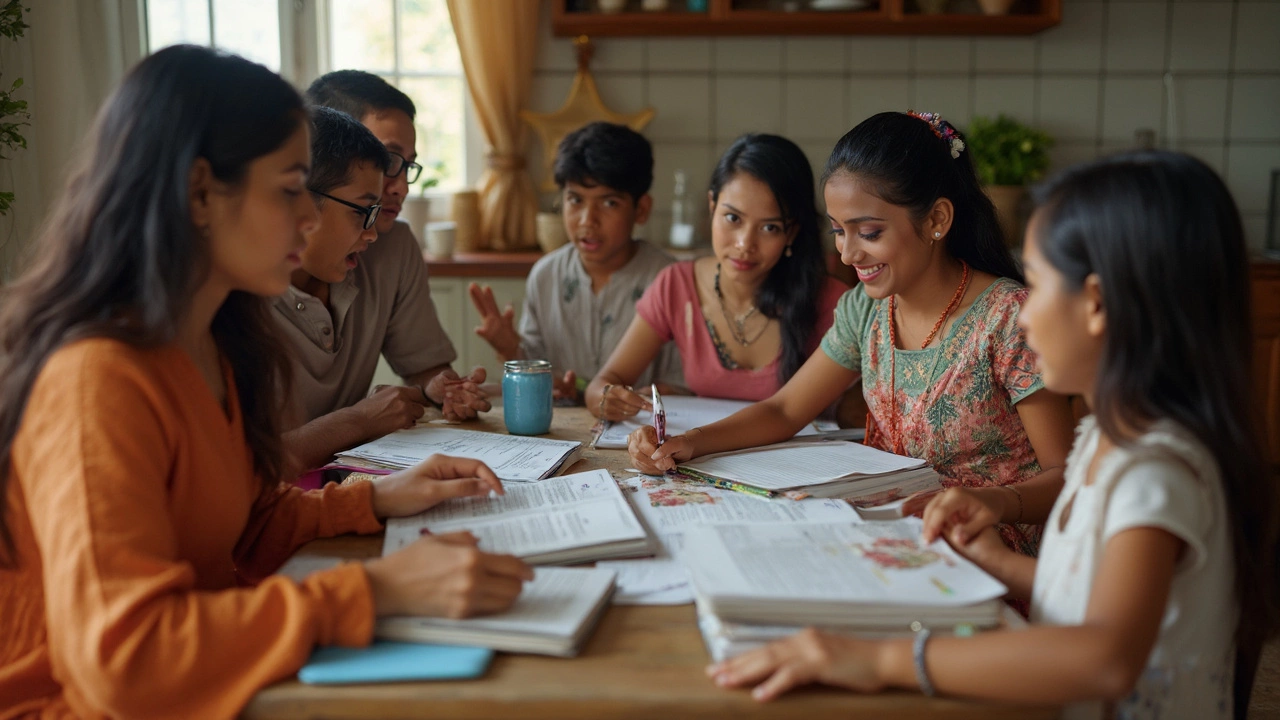
How Exams and Assessments Work
Exams in the CBSE syllabus aren’t just about those final marks—they cover a lot more than just memorizing stuff. The board splits assessments into two main types: formative (done throughout the year) and summative (the big exams at the end of a term or year). Basically, you can’t just cram the night before and expect miracles. Teachers keep track of your quizzes, homework, class projects, and attendance as part of your grades.
Here’s the breakdown for most CBSE classes:
- Formative Assessment (FA): Projects, classwork, quizzes, group work—anything hands-on or participative. Gives teachers a sense of how well you actually “get” the topics, not just mug up the textbooks.
- Summative Assessment (SA): These are the big written tests at the end of each term (SA-1 and SA-2 for classes till class 10). These decide a large chunk of your report card.
By the time you hit classes 10 and 12, the “Board Exams” get real. Lakhs of students sit for these each year in March. They're never easy, but they’re set in a predictable pattern. You’ll get a mix of question types—some short answers, some long, and plenty of MCQs in recent years. Marking isn’t usually harsh as long as you stick to the syllabus and write clearly.
What’s cool about CBSE is that it’s transparent about exam patterns. They publish sample papers every year, so you always have something to practice with before the big day. Schools hand out previous years’ question papers and even host mock exams. That means fewer surprises when you get that question sheet in your hand.
| Assessment Type | Weightage (Class 10) | When Conducted |
|---|---|---|
| Formative Assessments (FA1 to FA4) | 40% | Throughout school year |
| Summative Assessments (SA-1 & SA-2) | 60% | Mid-year & year-end |
| Practical Exams (for subjects like Science) | Varies (usually 20-30% of total) | Before/along with Boards |
Don’t forget, for classes 11 and 12, practicals in Science and other subjects can seriously boost your marks. Boards check your answer sheets twice, so mistakes are less likely to go unnoticed. If you want full marks, stick to the word limit, focus on clarity, and practice writing under time pressure.
Recent Changes and Trends
The CBSE syllabus is never stuck in one place. If you look at just the last five years, you’ll see a bunch of shake-ups—from what subjects get more attention to how exam questions are framed. The board says its goal is to make students actually understand, not just memorize.
Here’s what’s been shaking things up lately:
- Major focus on real understanding: CBSE now wants kids to know why things work, not just how. New patterns in board exams include more case studies and application-based questions, which means less rote learning and more thinking on your feet.
- Reduced syllabus during COVID: Remember when the pandemic hit? CBSE dropped about 30% of the content in 2020 and 2021 to help students manage at home. Though some chapters are back, a chunk remained trimmed to cut stress.
- Push for coding and data science: CBSE added coding in middle school and even basics of artificial intelligence for higher classes. This is all about pushing students towards future-ready skills instead of just textbook theory.
- Shift to competency-based assessments: Questions that force you to apply, analyze, and solve have slowly become the norm. Fewer direct "Explain this term" questions, more "How does this idea play out?" stuff instead.
- Continuous assessment: It's no longer about just the final board exam. Internal projects, school tests, and regular assessments now count towards your marks.
Board officials claim these changes are working. Students actually scored higher on the new types of questions in the 2024 board exams—it wasn’t just about memorizing last year’s papers.
| Year | Notable Change | Impact |
|---|---|---|
| 2020 | Syllabus reduced by 30% | Less exam pressure |
| 2021 | Introduction of coding classes | Future skills in focus |
| 2022 | More competency-based questions | Analytical thinking needed |
| 2023 | AI basics added to senior classes | Boost to tech awareness |
| 2024 | Continuous assessment highlighted | Mix of tests, projects, and boards count |
Long story short? If you’re following the CBSE syllabus right now, be ready for more “explain why” than “write what you remember.” It’s not just about passing the exam—it’s setting you up for what comes after school too.

Tips for Students and Parents
Tackling the CBSE syllabus isn’t just about mugging up chapters. It’s about smart strategies that make school life smoother and less stressful. Here are real-world ways students and parents can handle things better together:
- Follow the official syllabus book: The CBSE uploads the latest syllabus PDFs every year on their website. Make sure you’re studying from the new one, not an old, outdated version in your cupboard.
- Break down the year: Sometimes the amount of material looks scary, but splitting the syllabus into monthly or weekly goals makes it manageable. Do a little every day—cramming never works long-term.
- Understand the pattern: CBSE board exams focus more on application-based questions now, not just direct recall. Practicing from sample question papers and previous board exams (available free on the official site) is a game changer.
- Use NCERT books as your main guide: Almost every exam question comes straight from NCERT lines or examples. Extra reference books are helpful, but don’t ignore those plain NCERT textbooks.
- Don’t skip practicals and projects: Marks aren’t just from written exams. Practicals, projects, and internal assessments matter a lot, especially from Class 9 onwards.
- Ask for help early: If a subject gets confusing, don’t wait till the end of the year. Reach out to teachers, classmates, or tutors as soon as possible.
- Parents, encourage healthy habits: All-nighters and marathon study sessions do more harm than good. Make sure your child is getting enough sleep, food, and downtime.
Check out this quick table on how marks are typically split up in CBSE Classes 10 and 12—this helps you know where to put your energy:
| Class | Theory (Board Exam) | Internal Assessment/Practicals |
|---|---|---|
| 10 | 80% | 20% |
| 12 (Science Stream) | 70-80% | 20-30% |
| 12 (Humanities/Commerce) | 80% | 20% |
If you’re prepping for competitive entrance exams (like JEE or NEET), remember: their syllabi almost fully overlap with the CBSE curriculum, but not always 100%. Double check for a few extra topics outside the CBSE scope, especially in advanced science and math.
Little changes make a big difference. Plan early, use the right study material, don’t stay silent about doubts, and keep track of your progress. And parents, your support (more as a cheerleader, less as a taskmaster) is more helpful than yet another coaching class.
